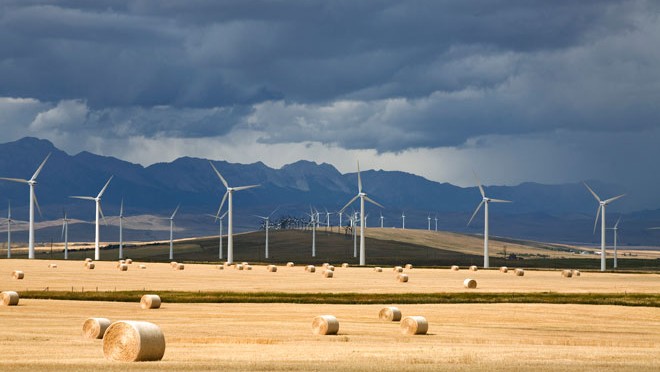The artwork for Ontario’s Climate Change Action plan shows Ontario, circa 2050, as a paradise of cyclists, electric cars, wind turbines, solar panels, dense urban environments and homes powered by geothermal energy. Renewable energy industries could not have been happier.
These industries have been growing fast, their products becoming cheaper, their subsidies continuing, their consumers still paying higher-than-market rates. They are the way of the future, sort of, but the future is rather far away.
Sort of, because renewables are beginning their climb to market dominance they foresee from so far behind. No matter how rich and many the subsidies for renewables from governments such as Ontario’s, industrial societies don’t change very rapidly.
BP’s 65th Statistical Review of World Energy, a yearly signpost document used throughout the world, just came out showing how far renewable energies have come, but how very far they have to travel.
In 2015, world oil consumption was about 4.3 billion barrels; natural gas consumption was the equivalent of 3.1 billions barrels of oil, coal 3.8 billion and renewables 364 million.
Around the world, renewables account for only a sliver of energy consumption. The sliver is growing. In 2014 and 2015 renewables accounted for about half the world’s new power generating capacity. As the International Energy Agency reported, however, “supportive government policies and related subsides continue to be critical to the capacity deployed.” In other words, renewables are growing while still needing government help.
Governments such as Ontario’s are big on biofuels, except that depending on where the calculation of the life cycle of producing a litre of, say, ethanol starts and ends, biofuels don’t reduce greenhouse gas emissions. And they are more expensive than conventional gasoline, especially cellulosic biofuels. Biofuel production actually dropped in Canada from 2014 to 2015.
Nuclear energy, of course, is carbon-free and therefore an excellent energy source for limiting greenhouse gas emissions – except that most environmentalists hate nuclear power.
They love renewables, especially hydro, except that they usually dislike at least some of the dams needed to produce the hydro, and some of the transmission lines needed to transport it. Moreover, hydro capacity in Canada has been more or less flat since 2008.
Renewables – the holy grail for Ontario’s energy future – comprise energy from wind, geothermal, solar, biomass and waste. As a share of total Canadian energy consumption, renewables are growing – to about 2 per cent overall.
Worldwide, renewables reached 2.8 per cent of energy consumption in 2015, up from 0.8 per cent a decade ago. Oil, by contrast, accounted for 32.9 per cent of global energy consumption, coal for 29.2 per cent and natural gas for 23.8 per cent. So the world relied on various fossil fuels for 85.9 per cent of its energy needs, compared with 2.8 per cent for renewables, according to the BP Statistical Review.
From renewables’ very low base, imagine how long it will take for them to become the dominant energy sources, as depicted in the Ontario drawing. That projection leaves aside public opposition to some forms of renewable energy such as wind turbines, plus the high cost of renewable energy from such sources as offshore turbines.
The good news worldwide is the decoupling than began to be noticed in 2014 between overall increases in energy demand and carbon emissions. These used to rise in lockstep, but no more, largely because of declines in energy use in Europe and North America, and the replacement of coal by natural gas.
Energy conservation, another favourite of environmental activists, is a pipe dream. Worldwide energy use is expected to grow by one-third between now and 2040, with consumption rising everywhere except in some advanced industrial countries.
An estimated 1.2 billion people in the world remain without electricity, 240 million of them in India, where energy growth is expected to be 5 per cent a year. Coal will be a major source of energy in some countries, notably India. Where coal declines, its market share might be absorbed by natural gas, another fossil fuel, although a less polluting one than coal.
Renewable sources have their place, and a growing place, in the world’s and Canada’s energy future. Governments can subsidize and prod and regulate for more renewables. Rent seekers in renewable industries will clamour for more help, but across the world, and in Canada, fossil fuels will dominate for a long time.
Contributed to The Globe and Mail


